Potato Arosa - an early drought-resistant variety
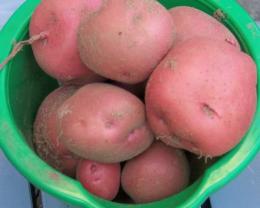
One of the most early varieties, Arosa potato, developed and registered in Germany in 2009. The particular value of the variety is its high yield and resistance to drought. Arosa can be grown without the use of artificial irrigation.
Content:
Description
The Arosa bush is beautifully formed, with semi-erect stems. Potato tubers are round, slightly elongated, the eyes are shallow. The color of potato flowers is red-violet, and the potatoes themselves have a bright red-pink color.
Its ripening period is only 70-75 days. The number of marketable tubers in a bush can reach 15-16 pieces, and the weight of each potato can be from 70 to 150 grams. Naturally, the Arosa variety is considered one of the highest-yielding; you can get up to 50 tons of potatoes per hectare, and with good plant nutrition, up to 70 tons!
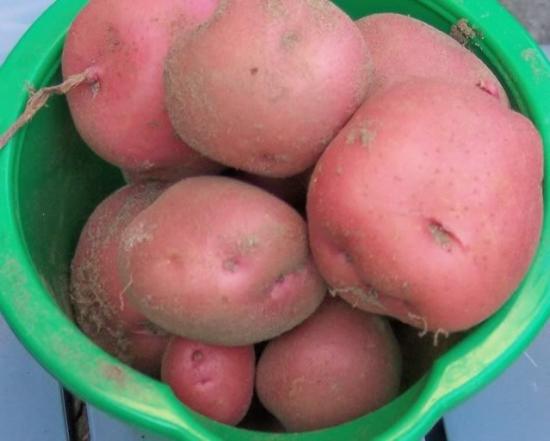
- The commercial yield of tubers is very high, can reach from 94 to 96%.
- This variety can be successfully grown on any type of soil.
- Arosa is extremely responsive to increased doses of mineral fertilizers.
- Since the variety is drought-resistant, it can be cultivated even in the southernmost regions.
Potatoes have fairly good shelf life; their dormant period lasts until the end of April. Sprouted and planted potatoes produce quick, friendly shoots.
Experts warn that treating Arosa against silver scab and rhizoctonia is mandatory! Plants have immune resistance to such diseases, How:
- nematode
- cancer
- striped and wrinkled mosaic
- virus U
Arosa tubers have light yellow flesh, medium boilability and are suitable for both regular table use and for making French fries. Arosa is classified as a universal variety. The high starch content (12 to 14%) gives potatoes excellent taste.
Agrotechnical techniques
Features of agricultural technology include the removal of tops recommended by potato growers approximately two weeks before the start of harvesting. Yes, yes, that's not a typo. Although we are accustomed to pulling the crop out of the ground by the tops, it is precisely its pruning before harvesting that will protect the tubers from late blight.
Among the garden tricks for early potato varieties, you can use special organic bedding. But for long-term cultivation on one area of Arosa, the method of overseeding spring green manure after harvesting the tubers has proven well. Overseeding rapeseed, mustard and oilseed radish improves the soil environment and increases the productivity of Arosa.
Let's find out why? First of all, they suppress the development of late blight due to the active processing of iron. It has been proven that late blight develops better in soil enriched with iron. Wonderful observation, right?
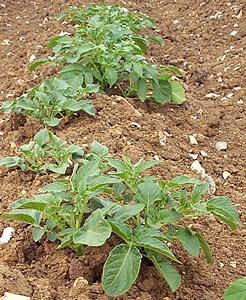
Cabbage green manure They are not afraid of poor and heavy soils, they successfully condense moisture from the air, therefore they remarkably “ennoble” the soil in terms of its moisture capacity. Their root system penetrates to a sufficient depth and brings nutrients that are inaccessible to potatoes to the surface. They reduce soil acidity by enriching it with calcium.They grow a lot of green mass, which, when decomposed, provides additional carbon that improves the nutrition of Arosa potatoes.
And the most useful quality is sanitary. Their phytoncides successfully suppress fungal parasites, but at the same time attract earthworms. Worms, passing the remains of vegetation with the soil through themselves, destroy pathogenic flora. Due to the roots of cabbage green manure and the work of worms, the soil structure improves, so the yield of Arosa increases significantly.
They should be sowed after harvesting Arosa, in August. It is better not to dig up the soil either before sowing or in late autumn. Otherwise, you will dissect the soil workers - earthworms. If autumn has dragged on and the crops have begun to bloom and produce ovaries, it is better to protect yourself from self-seeding and cut off the succulent fertilizer, leaving it right on the garden bed. If flowering does not occur, let all the regrown plants go under the snow just like that.
Reviews from gardeners
- They produce high, stable yields in southern arid regions;
- In years of prolonged rains and fogs, relative resistance to late blight of tops was noted;
- Those who grow Arosa for sale are satisfied with the presentation, shape and size of the tubers;
- Resistance to soil nematodes has been confirmed, but data on Arosa's resistance to stem nematodes has not yet been obtained.
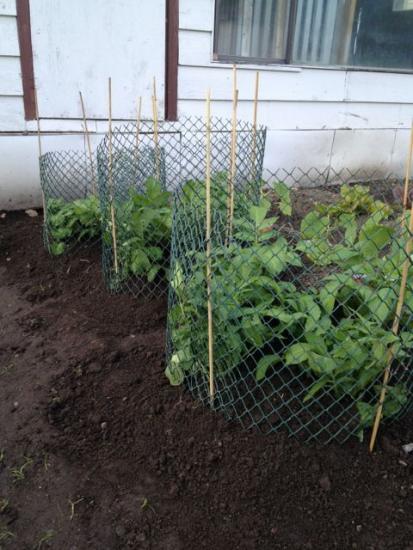
So, our gardeners confirm many of the characteristics of the Arosa variety given by German producers. An unexpected bonus was its relative late blight resistance in wet conditions. Perhaps this result can be improved by using early pruning of tops and protecting potato plantings using green manure. After all, constant spraying with copper is too harmful to the environment and humans.

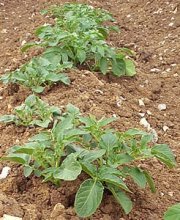
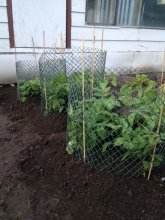
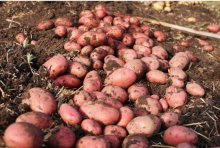

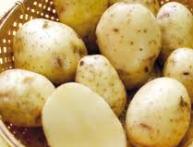
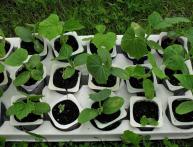


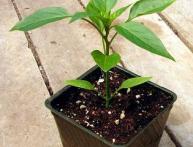
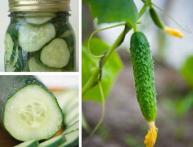

Comments
What a wonderful variety of potatoes, I would also grow one like this at the dacha. It’s so nice to eat early young potatoes, and it’s also good that interruptions in watering do not affect its yield.